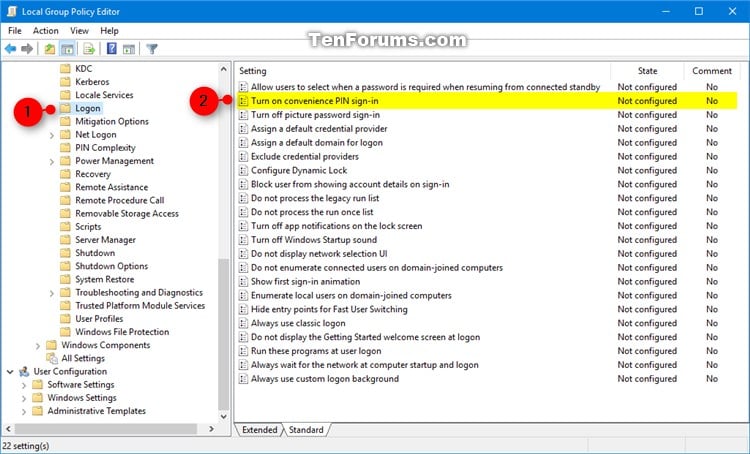You need to open Active Directory Users and Computers MMC snap-in (DSA.MSC) by selecting Start -> Administrative Tools -> Active Directory Users and Computers, and then locate your desired AD user. Right-click on the account and select Properties. To force the user account to change the password, just tick the 'User must change password at next logon' checkbox.
Once the PIN is accepted, the user has access to all local and network resources to which the user's Active Directory account has been granted permissions. The techniques covered here only apply to using smart card logons on computers that are attached to a domain. The PC is joined to Azure AD, and I use my Office 365 account to login to it (normally through a PIN, but the password used to work as well). Now, when I get to the login screen, I don't see my name and picture as I used to – only a blank picture, blank name, and a password field. Azure Active Directory Identity. The disable policy doesn't apply until after the PIN is established on the account. Once the PIN is set up on a Windows Account, it is not removed when Windows Hello is disabled via Intune/GPO, and it is seemingly impossible to remove manually. So I really don't see what it brings to the table besides a.
Command: Al baik fried chicken recipe.
dsquery user | dsmod user -mustchpwd yes
this command force all the users must change their passwords on next logon, CAUTION its include Domain Administrator also.
You can also use 'OU' for a group of users to change their password instead of 'user'
You can try the below commands if you have a group that contains all the users and no admins and such:
get-adgroup 'Group Name' | Get-ADGroupMember -Recursive | set-aduser -ChangePasswordAtLogon $True
or
get-aduser -Filter * -SearchBase 'OU=Users,DC=example,DC=com' | set-aduser -ChangePasswordAtLogon $True
And if you want to see what users will be affected you can run
get-adgroup 'Group Name' | Get-ADGroupMember -Recursive | ft name
Click Start -> All Programs -> Accessories -> Windows PowerShell. Then Right-click Windows PowerShell, and select Run as administrator
By using both Get-ADUser and Set-ADUser commands you can easily force all the domain user accounts in an organizational unit (OU) to change their passwords at next logon.
$ADuser = Get-ADUser $userID
If($ADuser)
{
Set-adaccountpassword $userID -reset -newpassword (ConvertTo-SecureString -AsPlainText $password -Force)
Set-aduser $userID -changepasswordatlogon $true
}

Reset Password in Active Directory
1. Reset Password allows an user to reset (set new password) without providing old password.
2. Reset password permission requires to the person who resets the password.With AD's default permissions, only Administrators and Account Operators can reset passwords.
3. When you reset a password you are performing an administrative act, you force the password to be changed without knowing the old password. This can bypass certain rule of the password policy. For example it will bypass the password history but it only bypass the complex password policy, it depends on the password complexity.
4. When resetting a password, the account will lose access to any EFS protected files that were configured under the user account. Microsoft access dll.
Change Password in Active Directory
1. Change Password requires user's old password to set new password.
Active Directory Logon Log
2. The Change password permission requires that the person who changes the password. With AD's default permissions, you can change your own password.
3. When you change a password, you supply the old password along with the new password, if the old password is correct and the new password follows the password policy then the password will be changed.
Audit Active Directory Logins
4. When changing password, the account will not lose any access to any EFS protected files that were configured under the user account.
Thanks,
Morgan
Software Developer
